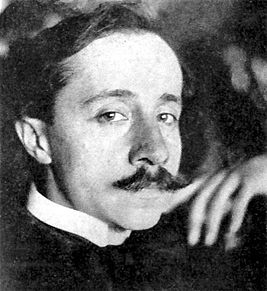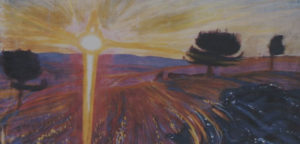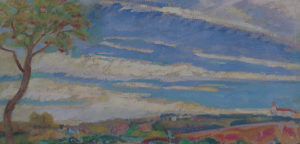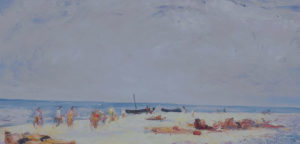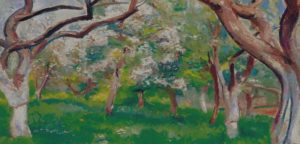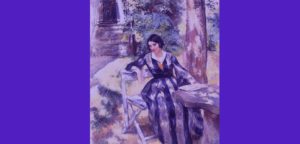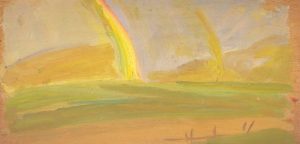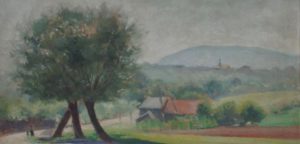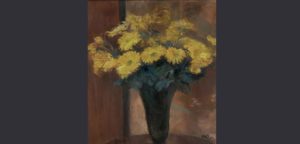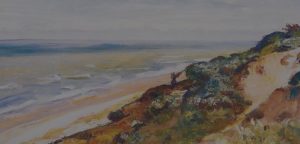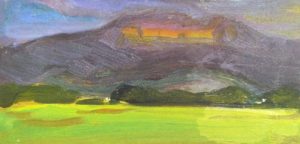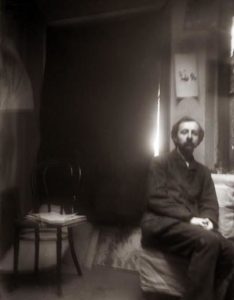He was born on May 4, 1875 in the village of Leorda, Romania.
1875 - 1950
Wojciech Weiss
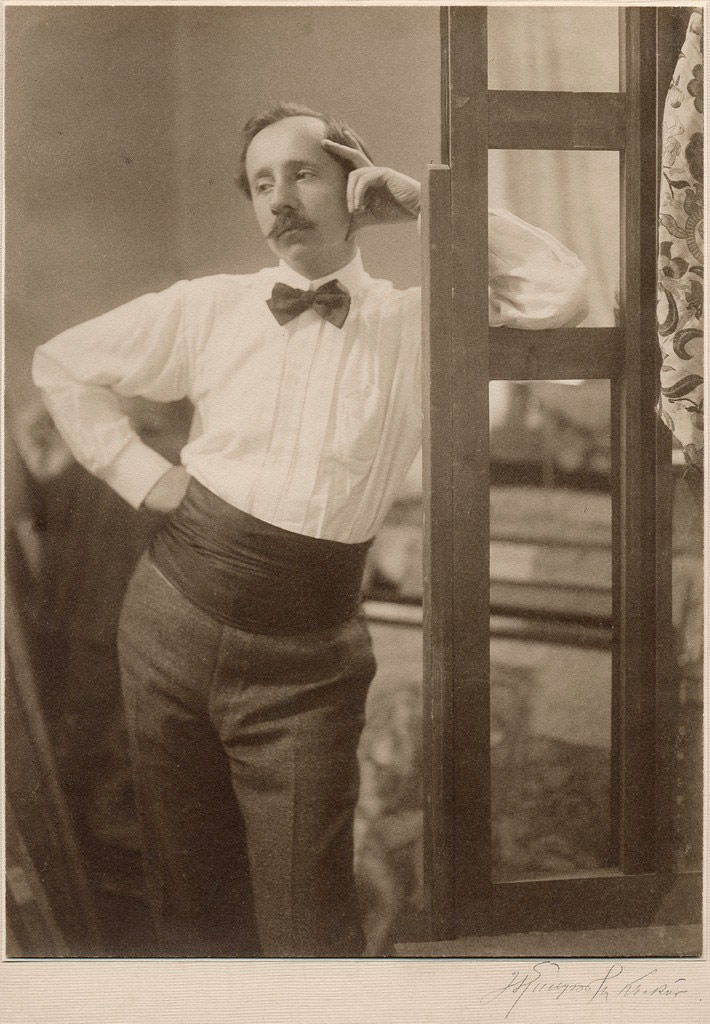
description
Polish artist, outstanding painter and graphic artist Wojciech Weis is one of the key figures of Polish modernism.
Wojciech began to study as an artist in Lviv. Then he attended the Academy of Fine Arts in Cracow, at first as a free listener.
Artist recognized and appreciated during his lifetime; he was a member of the Vienna Secession and the Society of Polish Artists, the professor and rector of the Cracow Academy of Fine Arts. The master had a huge influence on the development of Polish culture at the turn of the nineteenth and twentieth centuries. Despite all the titles and awards, Wojciech Weiss was in constant creative search, experimenting with a variety of techniques and trends in painting. The artist enriched Polish art with the latest European tendencies and contributed to the cultural rise of the country, which was called “Young Poland”. The museum of the artist is opened in Krakow.
Key ideas:
– The art of the painter is so diverse that it is difficult to fit into the framework of one art movement, style or genre. Wojciech Weiss was one of those creative personalities who never rest on their laurels, trying themselves in new, sometimes even unexpected roles. Lyrical and airy landscapes in bright colors of Impressionism, disquieting expressionistic paintings, psychological portraits; naked figures in Cezanne’s style, as well as strict pictures of Social realism make up the author’s rich creative legacy.
– Being one of the best students of the Krakow Academy of Arts, he mastered the art of classical drawing and painting. The canvas “Melancholic”, painted during the senior course of the Academy, was demonstrated at the exhibition together with the works of his teachers. By the end of the training, Weiss was awarded several awards in painting and developed his own artistic style.
– The artist’s fascination with avant-garde trends, in particular with Expressionism, began after he met Stanislav Przybyshevsky and traveled to European countries. The works of Weiss after 1898 are filled with rather gloomy themes; they contain anxiety, sadness and a sense of impending doom. The color palette of the artist in this period corresponds to the mood of the paintings – mostly dark, earthy shades, with interspersed alarming red and contrasting blue flowers.
– However, pessimism and despair did not last long in the artist’s canvases. In 1901, after a trip to Italy, the artist began to work in a completely different manner, depicting calm and lyrical landscapes with the abundance of sunlight and air space in them. Gradually, the palette of the painter becomes more and more light, sometimes turning almost monochrome, with a predominance of white and gray shades. This period in the work of Weiss researchers call “white”.
– Later landscapes of the author are distinguished by juicy and rich colors, masterful work with light and shadow, special harmony and musicality.
– Another undeniable merit of the artist is the development of the style of social realism, which was extremely popular in the socialist countries after the Second World War. Wojciech Weiss’ painting “Manifesto” (1950) depicting young workers with a flag is the standard of this style in Poland.
1875
1892
1898
1901
1905 - 1906
1908
1914
1918
1920
1939
1948
1950
The birth of the artist
He entered the Academy of Fine Arts in Krakow
He entered the Academy of Fine Arts in Krakow, where his teachers were such famous masters as Florian Zink, Leopold Lefterer and Isidore Jablonsky. In his student years, he created paintings on historical themes under the influence of Y. Mateyko, as well as realistic portraits and landscapes. Together with other students, he made a study tour around Europe. Visited the studio of L.Vychulkowski, who had a great influence on the artist.
Graduated from the Academy with honors and received a scholarship of Dr. Urban
Graduated from the Academy with honors and received a scholarship of Dr. Urban. One of the artist’s works “Melancholic” was presented at the exhibition of the association “Art” on a par with the works of his teachers. In the same year, he met famous writer Stanislaw Przybyszewski, who made a tremendous influence on the work and worldview of the artist. The paintings of Weiss at this time became close to the style of expressionism. Pessimistic mood and gloomy themes appeared in them.
Went to Italy
Went to Italy, where he lived in Florence and Venice. There was a turning point in the artist’s work: emotional and disturbing motifs gave way to calm and peaceful landscapes, the main role of which was played by sunlight. Weiss painted many Italian landscapes, in which his palette gradually grew lighter.
Became a member of the progressive Vienna Secession
Became a member of the progressive Vienna Secession. At this time, the so-called “white period” of the artist’s work began. He created paintings full of color, many of which were made using only white, light gray, pearl colors. In the composition and stylistics of these works, the artist’s passion for Japanese art is noticeably evident.
Received the post of the head of the Society of Polish Artists
Received the post of the head of the Society of Polish Artists. He married his student Irena Zilberberg, who became the master’s favorite model (depicted in numerous portraits and plot pictures). The following year, the first personal exhibition of the artist was held in Krakow, and a year later Weiss became a professor of his native Academy.
He moved to Vienna
In connection with the outbreak of the First World War, he moved to Vienna. He often worked in Kalwaria, creating colorful landscapes. The palette of the artist became more intense and juicy. He created compositions on mythological subjects, such as “Ceres” (1916), “Venus and Cupid” (1917) and others.
He was invited to the post of the rector of the Cracow Academy of Arts
He was invited to the post of the rector of the Cracow Academy of Arts, which he held until 1939. During this time, Weiss introduced drastic changes in the academic process of the Academy. He encouraged the dissemination of modern trends in the visual arts, advocated the equal education of men and women and introduced a number of innovations. These changes transformed the institution and made it one of the most progressive in Eastern Europe.
Worked at the publishing house "Fine Arts"
Worked at the publishing house “Fine Arts”, participated in many exhibitions and received several awards. In addition to the picturesque landscapes, the artist worked on graphic techniques, the most favorite of which was a monotype. Weiss also turned to the theme of nude, depicting nude female and male figures in the style of post-impressionism. In the interwar period, he also created several dozens of still lifes.
The artist began to create canvases in the style of Social realism
After the war began, he retained the post of the rector of the Krakow Academy and monitored the safety of its meetings; although in 1940 he was forced to flee Nazi persecution. After the liberation of the city, he returned to the Academy, where he worked until the retirement in 1946. The artist began to create canvases in the style of Social realism, which was extremely popular in post-war Poland. The most famous canvases in this style are “Strike”, “Look! A Beautiful Peaceful Manifestation”, “Manifesto” and others.
Received the Krakow City Award
Received the Krakow City Award for his services in the field of fine arts at the First Painting Exhibition in Warsaw.
The death of the artist
He passed away on December 7, 1950 in Cracow, Poland.

